Dr Todd Sink – Farming an All-Female Flounder Population
Southern flounder is an economically important edible fish, but farming of this species has not yet been perfected. In fact, fish farms are heavily reliant on capturing new fish from the wild each year for breeding purposes. However, wild populations are in decline due to changing environmental conditions and over-exploitation, which presents a real challenge to the sustainable production of this species. Dr Todd Sink and Dr Elizabeth Silvy at Texas A&M University are developing new methods to move away from the use of wild fish, by creating a sustainable captive breeding stock.
Farming Southern Flounder
Commonly served in restaurants and sold at fish markets, the Southern flounder is a quirky looking flatfish, with both eyes on one side of its head. This species is able to tolerate a wide range of environmental conditions, including varying water temperatures and salinities, making it a strong candidate for fish farming. However, there is currently a desire to develop new and improved farming techniques, as today’s methods involve collecting semen from wild-caught fish to successfully spawn captive larvae, in order to sustain the population.
The process of collecting semen from males, called strip spawning, frequently results in losses from stress, injury, and infections. Males are also quite small compared to female flounder, and females will often attack or even eat the males, which have no means of escape in culture tanks. As a result, new males need to be captured for breeding each year while the same females can be used for several years. This reliance on wild breeding stock and the smaller size of the males, which may never reach a marketable-weight, significantly limits Southern flounder farming (or ‘aquaculture’), and large-scale operations are not yet a reality.
Increasing demand for these fish and rising ocean temperatures that favour the development of males also put pressure on wild populations, resulting in declines in Southern flounder numbers, further increasing the need for aquaculture. To address this growing problem, Dr Todd Sink and Dr Elizabeth Silvy at Texas A&M AgriLife Extension Service at Texas A&M University are currently working to produce an all-female flounder population. Within such a population, the sex of some of these females can be altered, allowing them to breed with other females, removing the need for wild-caught males and eliminating culture issues associated small males that may not reach a marketable-size.
The research team has a strong track record of improving techniques and protocols for the production of various species on a commercial scale, and is taking a leading role in stock enhancement of Southern flounder.
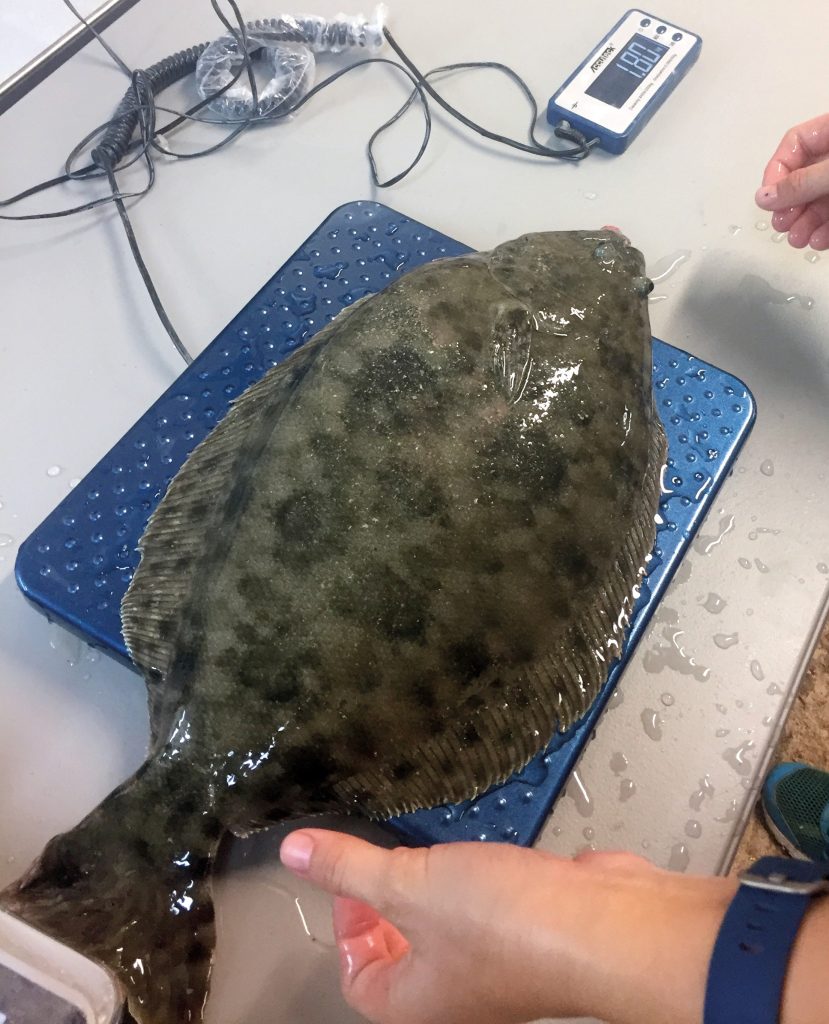
Creating an All-Female Population
When fish are farmed under unnatural conditions, the population’s gender ratio can become skewed due to a single factor. In Southern flounder, gender is influenced by genetics, temperatures during development, and levels of stress and hormones, with water temperature being the strongest influencer. During development, higher or lower temperatures will result in a higher number of the smaller, less valuable males, while an optimal temperature of 23°C results in more females. However, maintaining this optimum temperature is difficult in a large-scale hatchery.
Creating genetic clones of female fish could resolve this. To create such clones, Dr Sink and Dr Silvy applied both cold shock treatments and pressure shock treatments to fish eggs. The team used semen that had been treated with ultraviolet radiation to activate the fertilisation process without contributing any male DNA to the embryo, resulting in a clone of the mother. For the cold shock treatment, they put some of these ‘fertilised’ eggs in a water bath at 0°C for 45 minutes, and, for the pressure shock treatment, they placed eggs into a chamber and applied high pressure for 6 minutes.
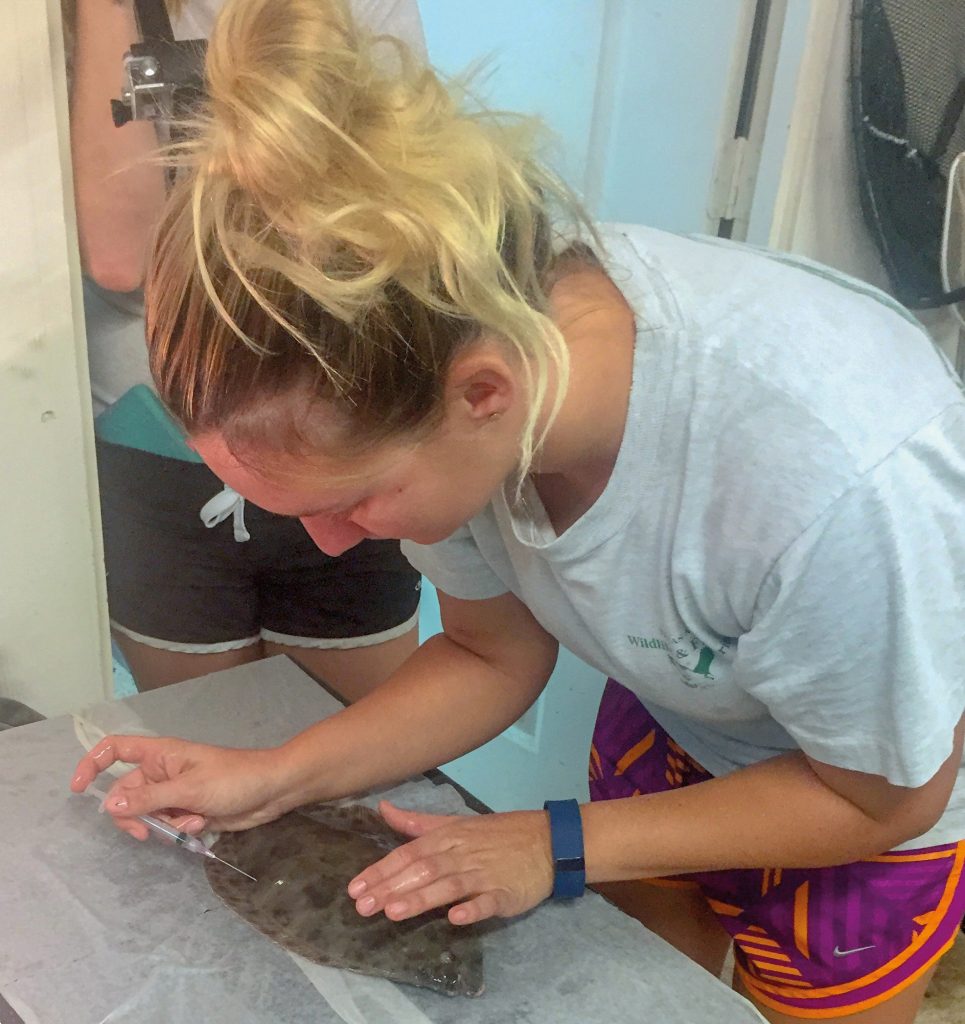
Pressure shock treatment was the most biologically viable method of producing clones, with an embryo survival rate of 5.75%, even 58 days after hatching. This might seem like a low number; however, flounder invest very little in individual eggs, producing up to 5 million eggs per female during a spawning season, with only a small percentage surviving metamorphosis to become juveniles. Given this strategy, even 5.75% survival can result in more than a quarter of a million juveniles.
Cold shock treatment, by contrast, produced a lower number of fertilised eggs and a lower number of larvae, making it much less suitable for this purpose.
From these findings, Dr Sink recommends using pressure shock treatment to produce female clones. Although this process is somewhat costly and time consuming, an aquaculture producer would only need to do it once, producing 30 to 40 juveniles for the next step.
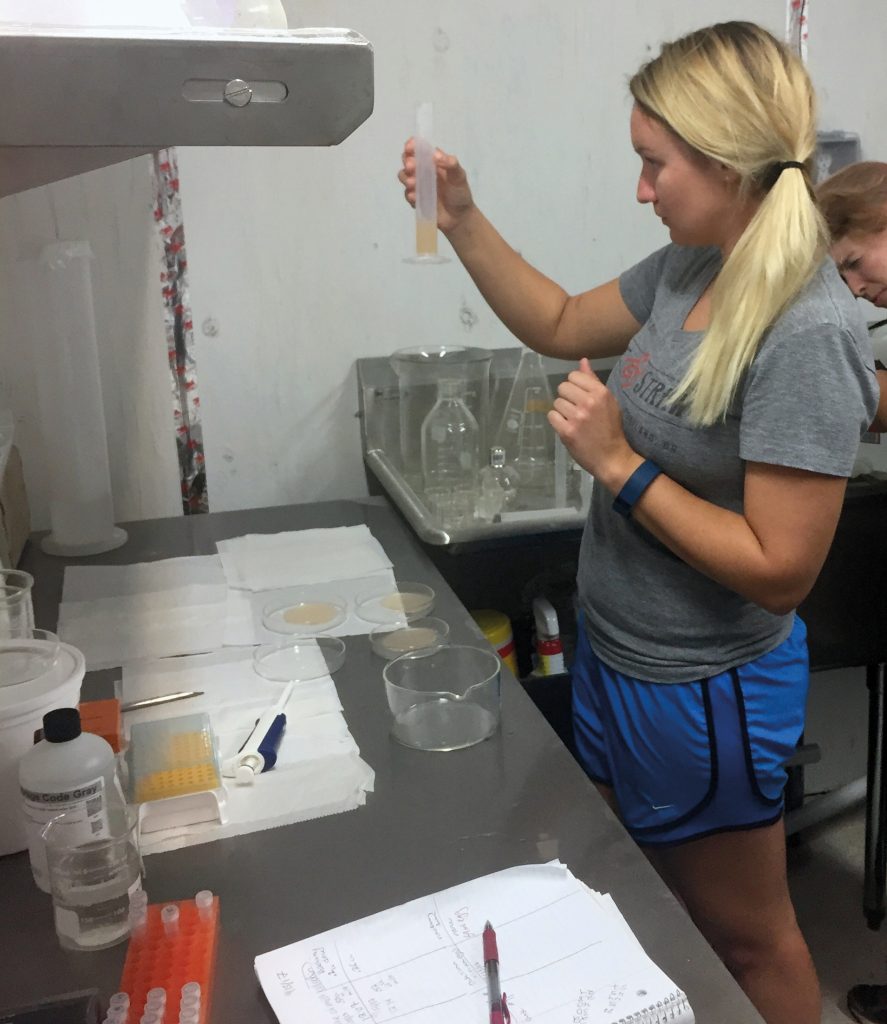
Making Males out of Females
As male flounder rarely reach a marketable size, it is beneficial to have an all-female culture population, which also serves to resolve the gender bias caused by unfavourable temperatures. However, continuously cloning the same population does not allow aquaculture producers to genetically improve their stock.
To address this, Dr Sink and Dr Silvy propose changing the sex of a number of cloned female fish, so that they can reproduce with other females. In this way, desirable traits, such as marketable size, fast growth, or disease resistance, can be picked out of the population, and specific females bred together. Similarly, those with less desirable traits, such as genetic defects, can be discarded from the breeding population, allowing for the overall improvement of Southern flounder stock.
Changing the sex – or ‘sex reversal’ – involves exposing the newly hatched larvae to a male hormone, such as testosterone, so that instead of developing ovaries and eventually eggs, the female develops testes and produces semen. This is an effective method and has already been refined in a number of species used in aquaculture.
The resulting fish are still genetically female, but are functionally male and can reproduce with the natural females to create all-female offspring. This allows for the mixing of genetics from different individuals to obtain the best genetic traits, but yet still produce all-female populations that improve production efficiency.
The research team is working to improve Southern flounder culture using this method of sex reversal, towards the creation of an all-female population that can be sustained. This project shows great potential for supporting the seafood and fishing industries. Development of Southern flounder aquaculture using cloning and sex reversal will promote jobs within hatcheries as well as commercial and recreational fishing, both of which are very large, economically important industries in the US. Furthermore, since males have a high production cost but low marketability, this project has the potential to economically improve flounder aquaculture and lower expense for the consumer.

Replenishing Threatened Wild Stocks
Aquaculture provides a sustainable source of fresh seafood, removing pressure from wild stocks. To increase wild stock further, many state and federal natural resource agencies also conduct stock enhancement programs, where larvae are grown in culture and then released into the wild to combat population declines that occur due to over-fishing or habitat loss.
The Texas Parks and Wildlife Department’s stock enhancement program has released more than 115 million red drum fingerlings in bays and estuaries all around Texas to prevent further population declines. Their work alone proves that this is a viable way of restoring fish stocks to their formerly sustainable levels.
Southern flounder stocks are currently in decline, with a 30% decrease observed in Texas over the last 15 years, and they are listed as ‘Near Threatened’ on the IUCN Red List of Threatened Species. Despite the management strategies already in place, there is a need to find new methods of restoring flounder fisheries and enhancing wild populations.
Using the techniques proposed by Drs Sink and Silvy, mass quantities of female flounder can be produced, which could greatly benefit stock enhancement programs by introducing more females to the wild. Stocking female flounder makes the largest impact on the population, because each female can produce millions of eggs and larvae over her lifetime, adding significantly to the population, but stocking with a male only increases the population by one. It only takes a single wild male to reproduce with multiple females, so stocking all female populations has the potential to make a significant increase in wild populations and could even double the current impact of stock enhancement.
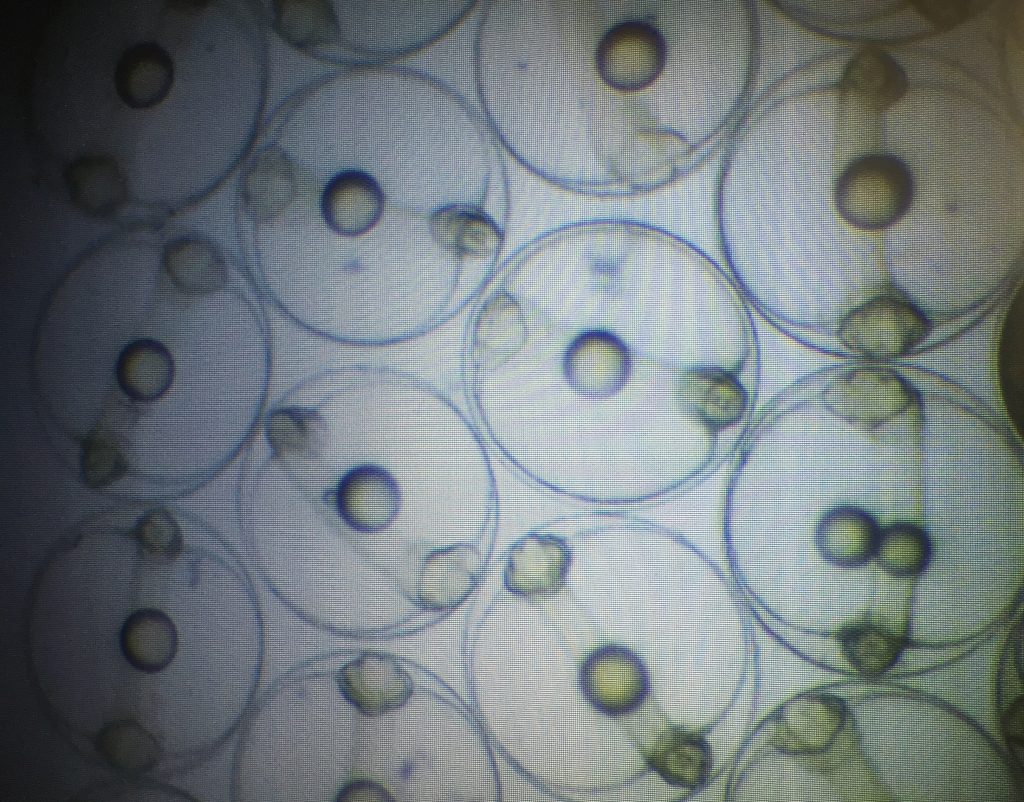
Beyond Southern Flounder Farming
As advancements such as these continue to develop in the aquaculture industry, it will become possible to farm greater quantities of fish in a sustainable manner, allowing us to move away from fishing threatened wild populations. Dr Sink and Dr Silvy’s work confirms both the economic and the environmental sustainability of Southern flounder as a species for fish farming.
The team’s results will be made available to both private and governmental farms, allowing for the development of better techniques and protocols. This will encourage more efficient production of Southern flounder in the future, without the reliance on wild-caught males. The findings will also be applied to the development of techniques for other species, including cobia – another commercially important edible fish.
The findings could prove very profitable on a large scale. Currently in the US, approximately 11% of livelihoods are dependent on the fishery and fish farming industries. If techniques such as those proposed by Dr Sink and Dr Silvy continue to be explored, there is the real potential for the expansion of these industries. New jobs at all skill levels will be generated, producing economic benefits for the country as a whole.
Reference
https://doi.org/10.33548/SCIENTIA431
Meet the researchers
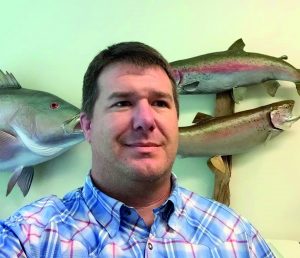
Dr Todd D. Sink
Department of Wildlife and Fisheries Sciences
Texas A&M AgriLife Extension Service
Texas A&M University
College Station, TX
USA
Dr Todd D. Sink earned his Bachelor’s degree in Fisheries and Aquatic Sciences from Purdue University, and his PhD in Natural Resources, specialising in fish stress and disease physiology, from the University of Tennessee. After working as a postdoctoral researcher at the University of Tennessee and the University of Arkansas at Pine Bluff, he began his current position as an Associate Department Head and Associate Professor in the Department of Wildlife & Fisheries Sciences at Texas A&M University (TAMU). Dr Sink is also an Aquaculture Extension Specialist at Texas A&M AgriLife Extension Service and the Director of the TAMU Aquatic Diagnostics Laboratory. He is currently working on a number of projects, including determining a viable method of sex reversal in female Southern flounder, which will allow the species to be bred and cultured without the need for wild-caught broodfish. Other projects include development of Atlantic croaker culture for the marine baitfish industry, peptide delivery systems to induced spawning in cobia, and extensive, pond-based larval grow-out protocols for cobia in the southern United States.
CONTACT
E: Todd.Sink@tamu.edu
W: https://wfsc.tamu.edu/people/sink-todd/
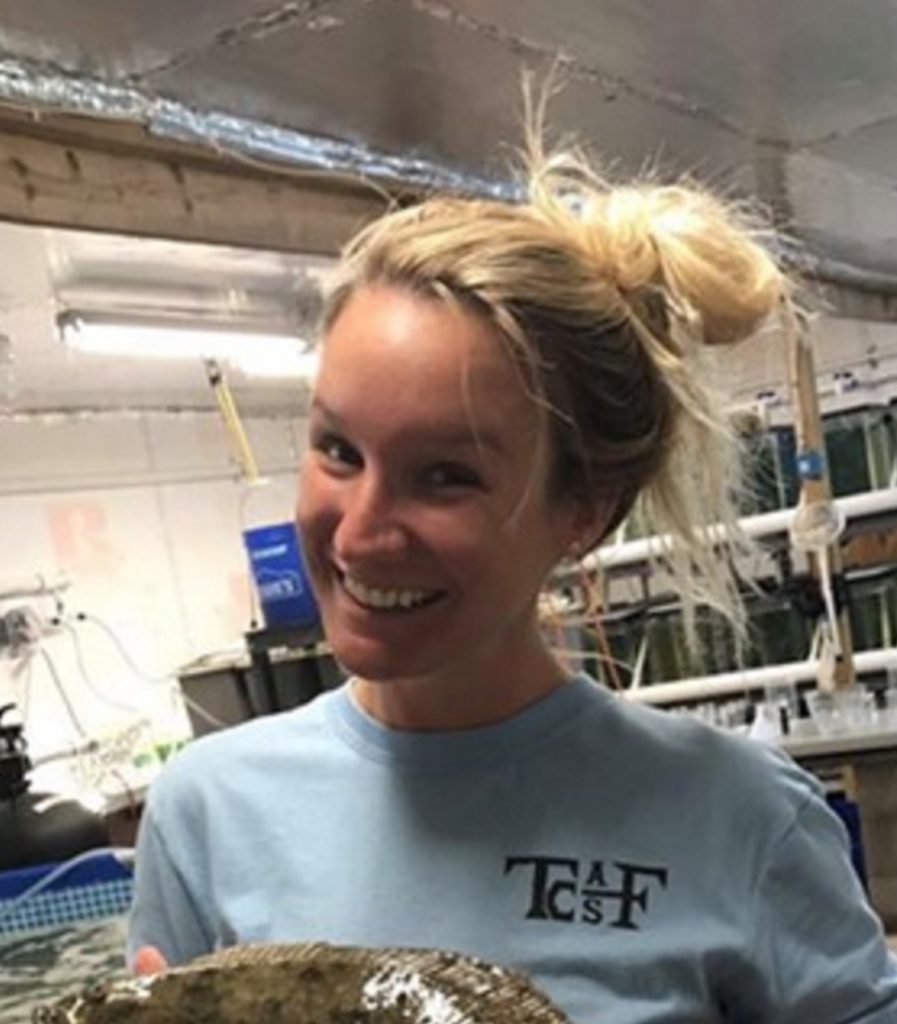
Dr Elizabeth Silvy
School of Forest Resources and Conservation
College of Agricultural and Life Sciences
University of Florida
Gainesville, FL
USA
Dr Elizabeth Silvy earned a Master’s degree from Texas A&M University in Wildlife and Fisheries Sciences, with a focus on oyster disease and oyster reef restoration. She went on to receive her PhD in Wildlife and Fisheries Sciences at Texas A&M University in 2019, with a focus on aquaculture, specifically marine finfish reproduction and larviculture. She studied the process and techniques of gynogenetic manipulation to remedy skewed gender bias in southern flounder. While at Texas A&M, she also investigated novel hormonal spawning aids for marine finfish, synchronising ovulation in wild-caught cobia, and with the aid of her major professor, Dr Todd Sink, developed a live foods harvesting system to enhance larval grow out of marine fish species. She is currently a postdoctoral associate working at the University of Florida, specialising in the development of aquaculture methodologies of Florida Hogfish, including broodstock husbandry, volitional and induced spawning, as well as larval rearing and grow out.
KEY COLLABORATOR
Dr Robert Vega, Texas Parks and Wildlife Department (retired)
FUNDING
USDA-NIFA
FURTHER READING
NJ Harris, JW Neal, TD Sink, P Perschbacher, Determination of the Spawning Season of Bigmouth Sleeper in Puerto Rico by Examination of Gonad Maturation and Reproductive Hormone Cycles, Gulf and Caribbean Research, 2012, 24, 41–50.
TD Sink, RJ Strange, RT Lochmann, Hatchery methods and natural, hormone-implant-induced, and synchronized spawning of captive Atlantic croaker (Micropogonias undulatus) Linnaeus 1766, Aquaculture, 2010, 307, 35–43.

Creative Commons Licence
(CC BY 4.0)
This work is licensed under a Creative Commons Attribution 4.0 International License. 
What does this mean?
Share: You can copy and redistribute the material in any medium or format
Adapt: You can change, and build upon the material for any purpose, even commercially.
Credit: You must give appropriate credit, provide a link to the license, and indicate if changes were made.
More articles you may like
Grandmothers: Innovation Through Tradition
Grandmother Project – Change through Culture (GMP) is an organisation dedicated to documenting the role of grandmothers and demonstrating the effectiveness of grandmother-inclusive strategies in improving the health and well-being of women, children, and adolescents. GMP’s groundbreaking work challenges conventional wisdom to transform community-based interventions in Africa and beyond, harnessing a powerful but often overlooked resource: the wisdom and influence of grandmothers.
Dr Robert Larkin | Cultivating Change to Improve Soil Health and Increase Potato Yield
Environmental quality and food production are facing the pressing challenges of climate change and global population growth. Dr Robert Larkin from the United States Department of Agriculture-Agricultural Research Service (USDA-ARS) and a team of plant scientists developed and tested a range of crop management systems to help overcome these compounding challenges. Their work is improving soil health and increasing the yield of potato crops, contributing to the future food security of nations.
Professor Giorgio Buttazzo | Artificial Intelligence and a Crossroads for Humanity
Where do we stand with artificial intelligence? Might machines take over our jobs? Can machines become conscious? Might we be harmed by robots? What is the future of humanity? Professor Giorgio Buttazzo of Scuola Superiore Sant’Anna is an expert in artificial intelligence and neural networks. In a recent publication, he provides considered insights into some of the most pressing questions surrounding artificial intelligence and humanity.
Dr Ralf Adam | New Technologies Shaping the Future of Oral Hygiene
Understanding the efficiency of various toothbrush technologies is essential for achieving optimal oral health. Dr Ralf Adam, who leads a dedicated team at Procter & Gamble in Germany, is keen to investigate the complexities of these technologies. His team have provided new insights into the best toothbrush types for plaque removal and the maintenance of gum health. By highlighting the importance of informed oral care decisions and ongoing investigations, this vital research works towards ensuring everyone can achieve a brighter, healthier smile.




